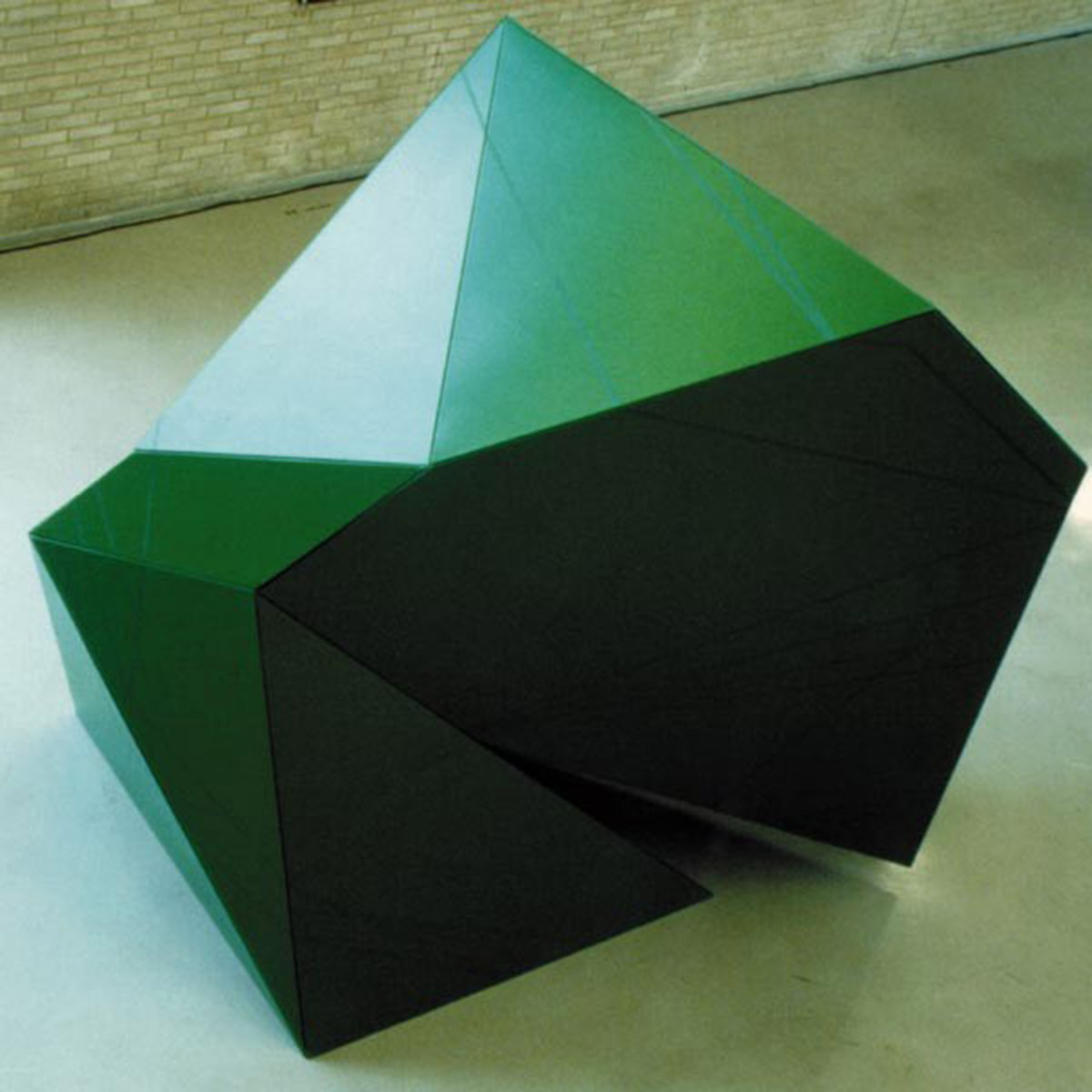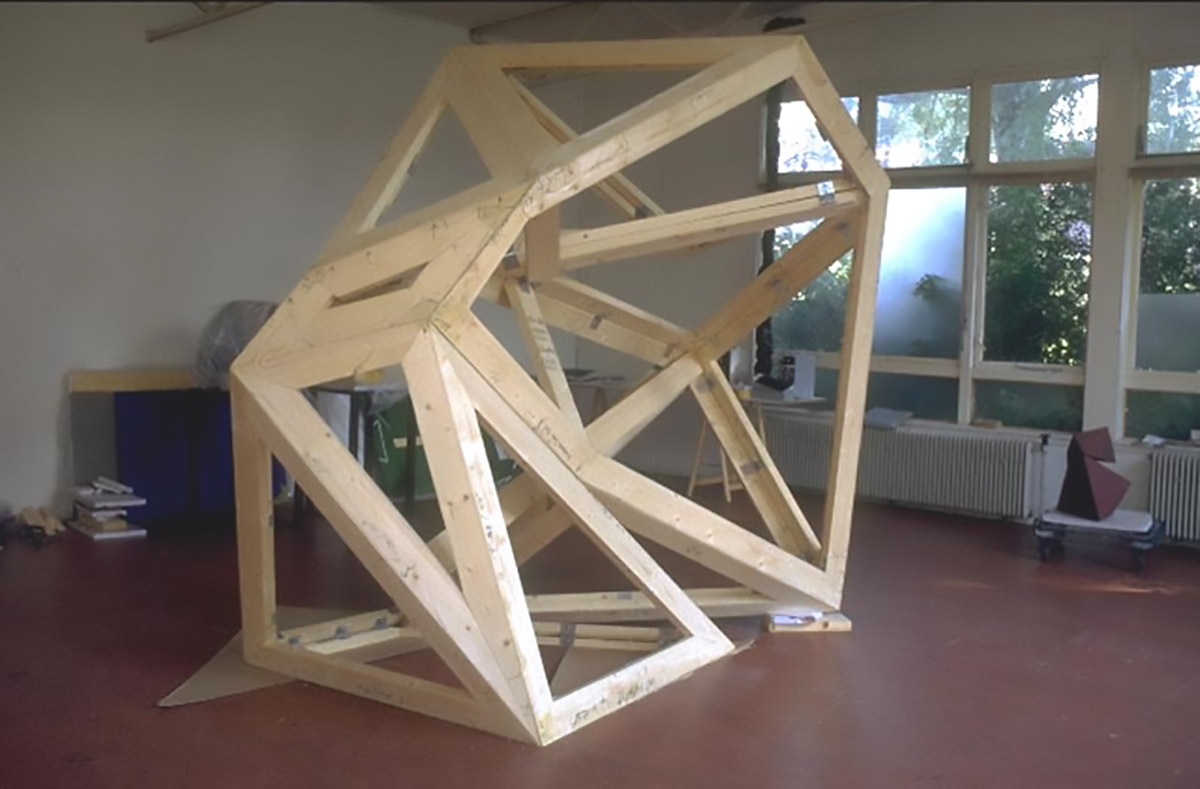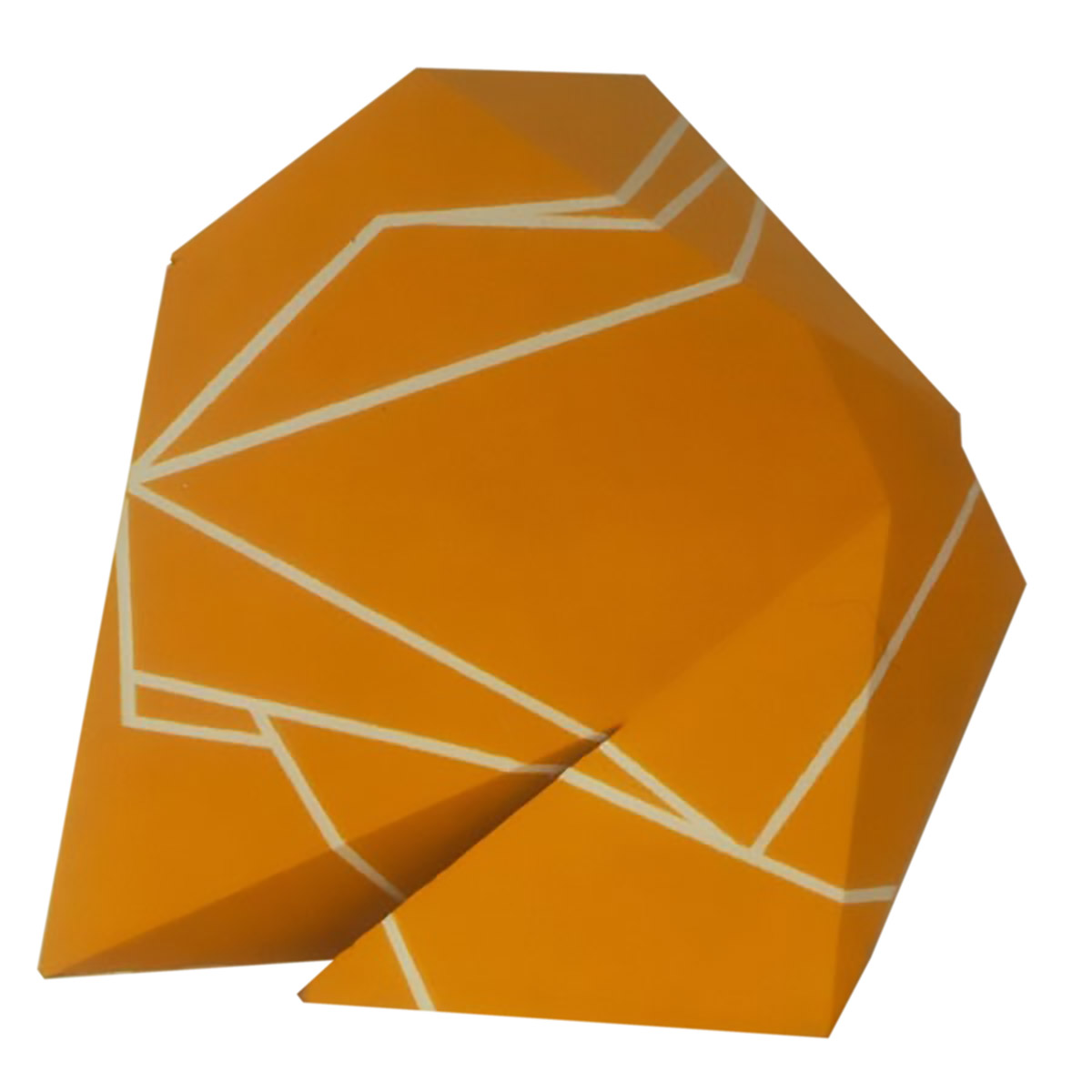
Folded Volume
Based on 3D computer sketch. A container is to architecture as a rectangular frame is to a painting. The frame defines the borders of the two-dimensional painting, as an outer limit the painting is not to be exceeded. It is the end of its world. The container like-wise holds a volume of space and that space is trapped within the confines of the container. Though the difference between painting and architecture is one full dimension, the internal relations between the confiner and the confined are fully comparable. Just as Frank Stella has broken out of the rectangular frame by inventing his shaped canvases, so too folded volume transforms the traditional 3d frame container. And the contents of the container are shaped along with it. A rectangular container is defined by six coordinates. Folded volume uses sixteen to define its shape. These sixteen coordinates are connected so as to seal its skin. Several; prefabricated irregular triangles and rectangles and one irregular hexagon are assembled together to fold the volume. It constitutes no more than a triple increase in information content, but it makes a world of difference. When circumventing a rectangular container the perspective views are predictable and the viewer knows intuitively what it looks like round the next corner. Folded Volume however does not reveal its shape that easily. Each new viewpoint offers a surprising new image very different to that of the previous viewpoint. Folded Volume activates the eye of the beholder. It was conceived in digital space as a genuine 3d sketch. Gravity did not act upon the model at the stage. The shape could be placed in many ways in physical reality. One of those possibilities was chosen fro the exhibition ‘the synthetic dimension”. After this choice was made, gravitational force took effect on the model. It was then that it touched the ground in the mind of its maker. Folded volume was exhibited in Museum De Zonnehof in Amersfoort in 1991 at the Synthetic Dimension show.


